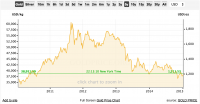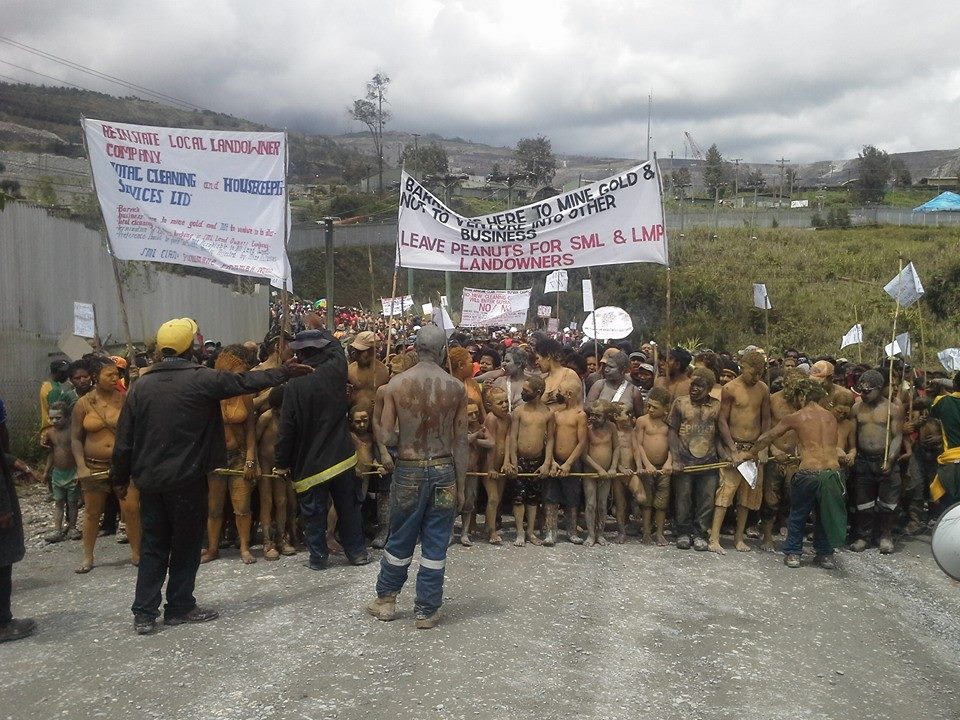Top 5 reasons to divest from Barrick Gold |
1. It's a horrible investment When gold doubles, gold mining stocks make modest gains. But when gold drops 10 or 20 percent, mining stocks tumble. This is the hard lesson that investors have learned over what has been a turbulent decade for the rare metal. Higher gold prices mean that lower grade ore bodies are exploited as fast as possible, ensuring expanding operations, large infrastructure expenditures, cut corners and higher costs per ounce. Lower gold prices send �proven and possible reserves� plummeting, while some mines become completely unviable following these mining binges. What's more, Macquarie Capital Markets analyst Ron Stewart just released a 17-page report, arguing that Barrick's stock in particular should still be avoided, even though it has already dropped more than 70% over the past three years, pointing to Barrick's "lack of growth, excess debt, poor strategic clarity, operating risk and a head office that appears to be in turmoil." Compare Barrick's 5 year price chart (left) to the price chart for gold over the same period (right). Gold mining is consistently a worse investment. 2. Barrick's misrepresentations and lies are a liability Barrick's misrepresentations in their environmental reporting have won them numerous fines, including the largest fine ever doled out by Chile ($16 million) and a $618,000 fine from US authorities. Barrick appealed the Chilean fine, but lost their appeal to the Supreme Court, and now could face $200 million more in fines and could even have their Pascua Lama permit cancelled due to the severity of the charges filed by the regulator. Additionally, Barrick is being sued by everyone from Tanzanian villagers seeking justice for massacres (with the help of a high-powered UK law firm)1 to their own investors, with five former employees testifying as confidential witnesses to Barrick's fraud. The investor lawsuit (filed in both US and Canadian courts) alone amounts to $6 billion, or almost half of Barrick's market cap ($13.94 Billion). While this may seem excessive, Barrick's market cap was valued at over $48 Billion from 2011 until 2012. 3. Years of turbulence at the highest levels of Barrick's management What do Peter Kinver, Aaron Regent, Jamie Sokalsky, Igor Gonzales, Sybil Veenman, and Ammar Al-Joundi all have in common? They were all named as co-defendants in the $6 billion shareholder class action for fraud. They also have all either quit or been fired from Barrick in the past 3 years. Chief Operating Officer and Executive Vice President Peter Kinver was first to go, retiring from Barrick on May 2, 2012. Kinver was replaced by Igor Gonzales, who announced his departure less than a year later. Soon afterwards, CEO Aaron Regent was fired from Barrick in July 2012 because Peter Munk was �disappointed� in the share performance. In reality, Barrick's finance woes had hardly begun. Following the April 2013 suspension of the Pascua Lama Project due to environmental violations, three of Barrick's top South American executives � President for Barrick South America Guillermo Calo, General Director of Operations Robert Mayne-Nicholls, and regional Vice-President for corporate affairs Rodrigo Jimenez - all resigned on the same day. Peter Munk was the next to step down in April 2014, leaving the company in the hands of a brand new chairman, former Goldman Sachs executive John Thornton. Since Thornton's reign, Barrick CEO Jamie Sokalsky stepped down in July 2014 while CFO Ammar Al-Joundi was promoted to senior executive vice president. This promotion didn't last long, however, as Al-Joundi announced his departure from Barrick a mere 4 months later. During that same period, other staff, including Sybil Veenman, senior vice-president and general counsel, the head of corporate development and general counsel, have left or been replaced. At this point, every executive (with the exception of one George Potter) named as co-defendants in the shareholder suit has left or been fired within the last 3 years. 4. Communities around the world are standing up to Barrick's abuses
Lawsuits
are but one of the tactics that communities employ against Barrick,
but these are the only tactic that Barrick is required to report to
shareholders. Strong resistance movements have been built in the
Dominican Republic, Tanzania, Chile, Argentina, Papua New Guinea,
Peru and elsewhere that have the potential to heavily impact the
bottom-line, using direct action and rallying popular movements
against Barrick's abuses and corruption. 5. Gold mining is unnecessary and destructive Gold, long said to inspire insanity in the men who would search for it, has now become an absurd industry, producing over a million times more waste than product. Barrick�s gold mines on average use more water than the entire bottle water industry in Canada, and this water is polluted with mining waste products such as cyanide, mercury, arsenic, cadmium, selenium, and sulfides. All this waste and pollution is exchanged for a product that has very few practical applications. The vast majority of gold is used for jewellery, while its use for investment is next in line. That leaves less than 11% for all other uses of the soft shiny metal. What�s more, since gold is eternally recycled and never consumed, there�s enough that is already dug up2 to meet practical demands for all of the foreseeable future. Right now, the environmental costs of gold mining are almost entirely unaccounted for. This will change. As gold has little social value and accounts for 40% of mining conflict3, this industry is ripe for crippling reform. Investors should stop investing in this needless industry and join the movement to seek justice for the real victims of Barrick's abuses: the communities next to their mines. 1. Since this article was written, Barrick settled out of court with the Tanzanians seeking justice for killings and toxic pollution. Read how this, however, does not resolve the issue. Since September 2014, local human rights sources allege that there have been at least 20 new cases of deaths or serious injury at the North Mara. 2. According to the World Gold Council, 30-36% of our gold supply comes from recycled sources. http://www.gold.org/download/file/3565/gold-supply-and-demand-q3-14.pdf 3. According to a report commissioned by PDAC analyzing 171 mining conflicts, 40% of these conflicts involved gold mines. http://www.miningwatch.ca/sites/www.miningwatch.ca/files/CSR_Movements_and_Footprints.pdf |





